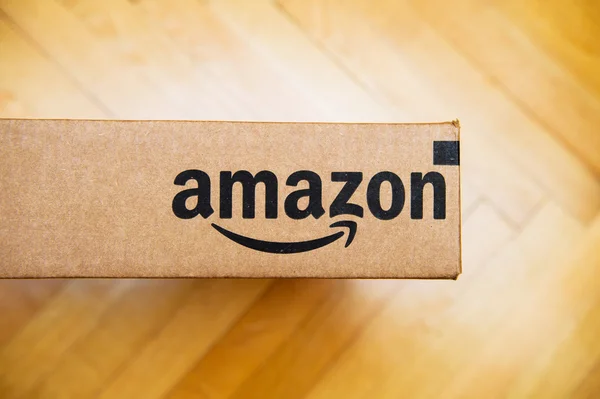Amazon’s stock took a sharp hit, sliding 7% after hours on Thursday, as investors reacted to slower-than-expected growth in its cloud business, Amazon Web Services (AWS). While the company beat earnings estimates overall and continued to see strong performance in retail and advertising, AWS a key profit driver failed to deliver the kind of acceleration many had hoped for. With rivals like Microsoft and Google making big strides in cloud and AI, amazon stock results left some wondering whether it’s starting to lose its edge in one of tech’s most competitive arenas. what is importance of investment? It is very important for long-term investors to show confidence in the company.

Amazon stock KEY POINTS
- Amazon boosted its annual target for artificial intelligence spending as it frantically builds out more data centers to meet demand for the technology.
- Revenue expansion in Amazon Web Services underwhelmed investors, who probed Amazon CEO Andy Jassy on why its cloud rivals are growing at faster rates.
- The second-quarter results showed Amazon is navigating President Donald Trump’s shifting tariff policies better than Wall Street feared.
Table of Contents
ToggleAmazon stock Slide 7% as Cloud Growth Lags Behind Rivals in AI Race
Amazon stock dropped roughly 7% on Friday after the company’s earnings raised fresh concerns that its cloud business, Amazon Web Services (AWS), is falling behind Microsoft and Google in the race to dominate artificial intelligence.
While AWS remains the long-time leader in cloud computing, its revenue rose just 17.5% in the June quarter—slightly ahead of analyst expectations, but far behind Microsoft Azure’s 39% surge and Google Cloud’s 32% growth.
The slower pace is raising eyebrows, especially since Amazon outspent both competitors, pouring $31.4 billion into capital investments during the quarter. The company now expects to spend a staggering $118 billion this year—more than analysts had anticipated.
Investors (Amazon stock) Reward Rivals as Amazon’s Cloud Unit Struggles to Keep Up in AI Race
Both Google and Microsoft also signaled plans to ramp up spending, but unlike Amazon, their strong AI-driven growth won over investors. The message was clear: big investments are fine—as long as they’re delivering results.
All three tech giants are pouring billions into data centers and advanced chips, racing to meet the exploding demand for AI-powered services. But while Microsoft and Google showed clear progress, Amazon Web Services (AWS) failed to deliver the same impact.
“The spotlight was firmly on AWS, and it didn’t quite shine as brightly as expected,” said Matt Britzman, senior equity analyst at Hargreaves Lansdown. “Microsoft and Alphabet have already built strong momentum in cloud growth, but AWS wasn’t the knockout many were hoping for.”
Meanwhile, AWS’s ballooning costs are starting to eat into its profit margins. That’s a concern, given AWS has long been Amazon’s most profitable division—contributing around 60% of the company’s total operating income.
Amazon Web Services saw its profit margins shrink to 32.9% last quarter—its lowest level since late 2023—adding to investor concerns. On top of that, Amazon issued an operating income forecast for the current quarter that came in below Wall Street expectations.
Still, CEO Andy Jassy tried to reassure analysts on the earnings call, saying it’s “still very early days” in the AI race. He emphasized that AWS, which remains significantly larger than its cloud rivals, is well-positioned to benefit once current AI infrastructure bottlenecks ease.
Despite gaining 6.7% this year, Amazon shares traded at $216.60 in early Friday trading—putting the stock on track to lose about $170 billion in market value if the decline holds.
Even after the drop, Amazon stock valuation remains rich. Its forward 12-month price-to-earnings (P/E) ratio stands at 33.87—just below Microsoft’s 34.19 but well above Alphabet’s 18.64, according to LSEG data.
RETAIL RESILIENCE

Amazon stock: analysts Stay Bullish on Amazon Despite Cloud Concerns, Thanks to Strong Retail Performance
At least 30 analysts raised their price targets for Amazon stock following the earnings report, while only three lowered theirs—bringing the median target to $260. That optimism is largely driven by the continued strength of Amazon’s retail business.
Despite economic headwinds and ongoing tariffs introduced during the Trump administration—pressures that have disrupted many other retailers—Amazon’s retail operations have held steady.
CEO Andy Jassy noted that the company hasn’t seen a drop in consumer demand or any significant rise in prices so far this year. In fact, Amazon’s online store sales jumped 11% in the second quarter, surpassing expectations.
Analysts added that much of the impact from tariffs has so far been absorbed by manufacturers and suppliers. They also pointed out that a large portion of the inventory sold during the quarter had already arrived in the prior three months, helping buffer Amazon from immediate cost pressures.
“If Amazon’s retail division were a separate company, its near-flawless performance this quarter would’ve sent the stock soaring,” said Michael Morton, analyst at MoffettNathanson.
“Unfortunately, as we all know, the success of the retail business is not what’s going to matter in the near term for Amazon’s stock price.”
Disclaimer: The information provided herein is for informational purposes only and does not constitute investment advice, a recommendation, or an offer to buy or sell any securities. All investment strategies and investments involve risk of loss. Individuals should conduct their own research or consult a financial advisor before making any investment decisions. The author/publisher is not a registered investment advisor and does not accept responsibility for any trading losses incurred based on the information provided. Past performance is not indicative of future results.
